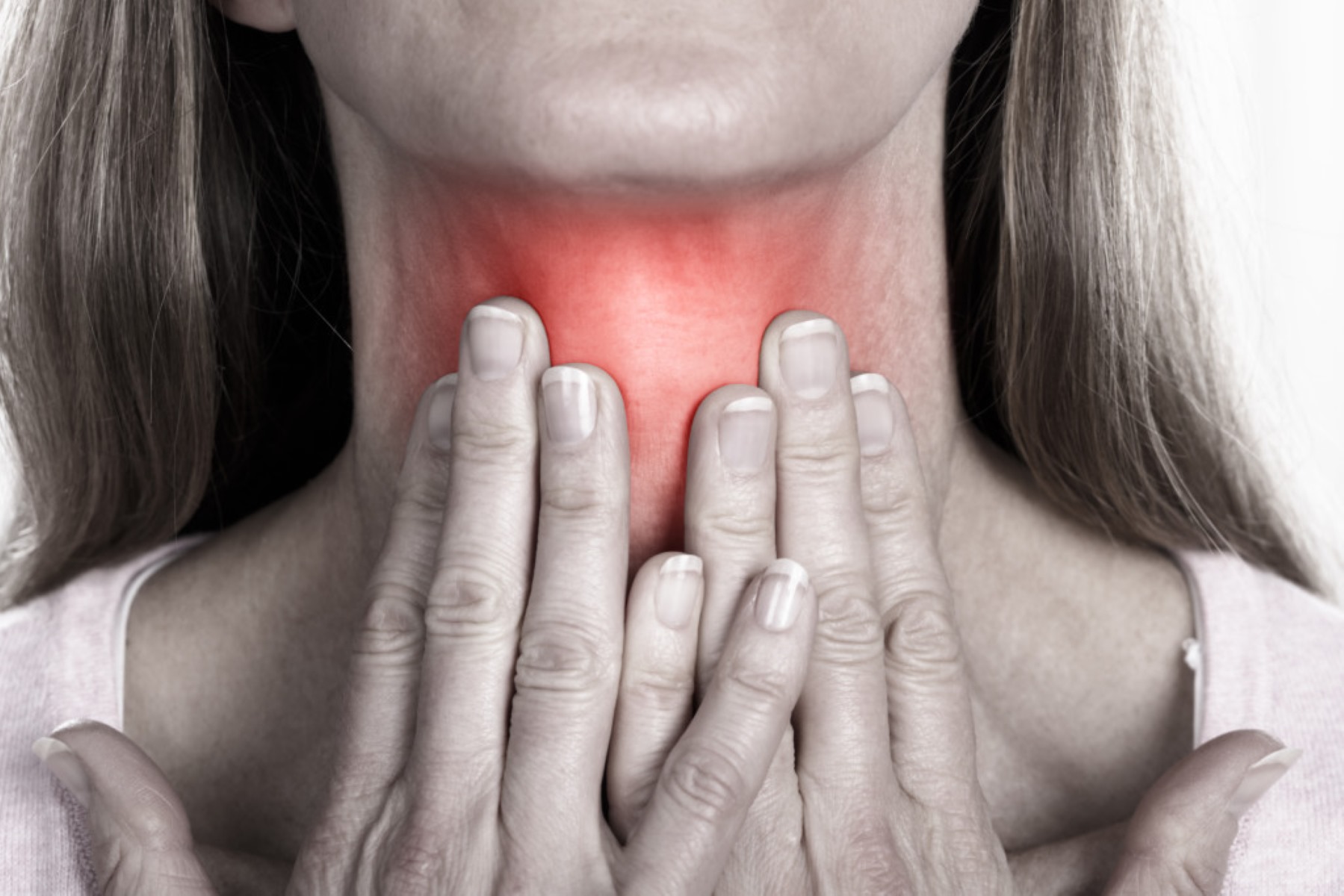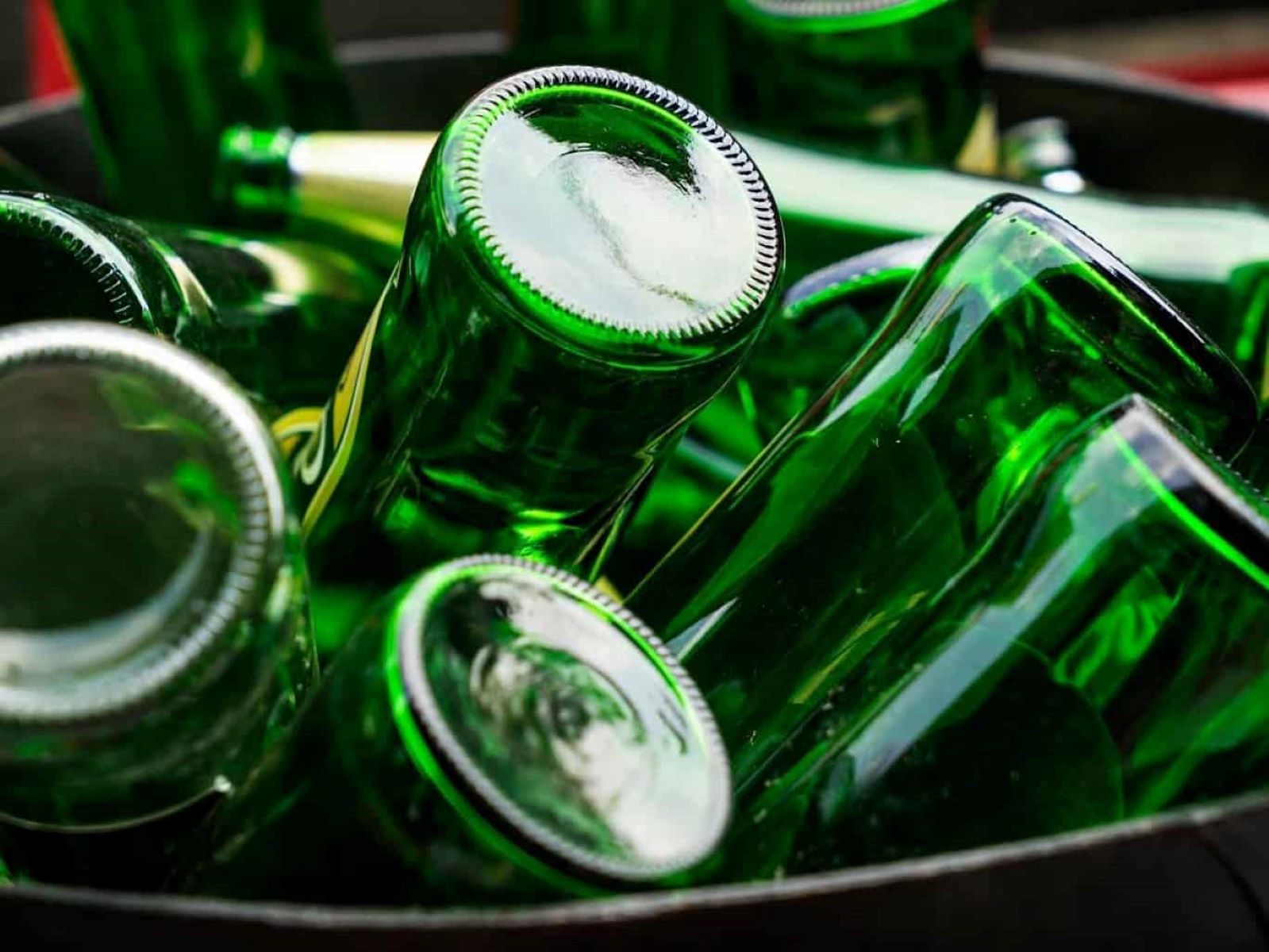Home>Furniture & Design>Interior Design Trends>What Happens If I Swallow Glass


Interior Design Trends
What Happens If I Swallow Glass
Modified: March 2, 2024
Discover the potential risks and consequences of swallowing glass and learn about the latest interior design trends to elevate your living space. Explore expert advice and tips on interior design trends.
(Many of the links in this article redirect to a specific reviewed product. Your purchase of these products through affiliate links helps to generate commission for Storables.com, at no extra cost. Learn more)
Introduction
Swallowing glass, even in small amounts, can be a frightening and potentially dangerous experience. The fragility and sharp edges of glass make it a hazardous substance if ingested. While accidental ingestion of glass is relatively rare, it can occur in various scenarios, such as when glassware breaks unnoticed in food or beverages, or when children mistake small glass fragments for candy or food particles.
The human body is not equipped to digest or process glass, and when it is swallowed, it can cause significant harm to the digestive tract. The potential risks associated with swallowing glass underscore the importance of understanding the implications and seeking appropriate medical attention if such an incident occurs.
In this article, we will delve into the nature of glass, the potential risks and symptoms of swallowing glass, as well as the necessary treatments. By shedding light on this topic, we aim to raise awareness about the dangers of ingesting glass and provide valuable insights into addressing this concerning issue.
Key Takeaways:
- Swallowing glass can cause serious harm, including cuts and internal injuries. If you suspect glass ingestion, seek immediate medical help to prevent complications and ensure proper treatment.
- It’s important to handle glassware carefully to avoid breakage. Educate others, especially children, about the dangers of swallowing glass to prevent accidents and promote safety.
Read more: What Happens If You Swallow Lemon Seeds
What is Glass?
Glass is a versatile and ubiquitous material that has been an integral part of human civilization for centuries. Composed primarily of silica, with varying amounts of other compounds, glass is renowned for its transparency, durability, and malleability. It is commonly used in the manufacturing of windows, containers, tableware, and a myriad of decorative and functional items.
From a chemical standpoint, glass is an amorphous solid, lacking the crystalline structure found in most solids. This unique characteristic gives glass its distinct properties, including the ability to transmit light while maintaining a solid form. The manufacturing process involves heating raw materials, such as sand, soda ash, and limestone, to high temperatures until they fuse into a molten liquid that can be shaped and cooled into the desired form.
Glass comes in various forms, including soda-lime glass, borosilicate glass, and tempered glass, each with specific properties suited for different applications. Soda-lime glass, for instance, is commonly used in windows and containers due to its cost-effectiveness and workability, while borosilicate glass, known for its high thermal resistance, is favored in laboratory equipment and kitchenware.
The inherent fragility of glass, stemming from its non-crystalline structure, is a defining characteristic that poses risks when ingested. When broken, glass fragments can have sharp edges that may cause lacerations and internal injuries if swallowed. Additionally, the chemical composition of glass, which is indigestible, presents further hazards to the digestive system.
Understanding the nature of glass is crucial in comprehending the potential dangers it poses when accidentally ingested. The unique properties and composition of glass underscore the importance of handling and disposing of glassware with care to prevent breakage and subsequent ingestion, thereby minimizing the risks associated with this material.
By gaining insight into the composition and properties of glass, individuals can better appreciate the potential risks and implications of swallowing glass, prompting greater caution and vigilance in handling and using glass products in daily life.
Potential Risks of Swallowing Glass
Swallowing glass poses a range of potential risks to the human body, primarily due to its physical and chemical properties. The sharp edges of glass fragments can cause immediate damage to the delicate tissues of the mouth, throat, and digestive tract. When ingested, these sharp edges can lead to lacerations, punctures, and abrasions along the esophagus, stomach, and intestines, potentially resulting in severe internal injuries.
Furthermore, the chemical composition of glass, primarily consisting of silica, sodium carbonate, and calcium oxide, renders it indigestible and abrasive. When glass enters the digestive system, it can irritate and inflame the gastrointestinal lining, leading to discomfort, pain, and potential complications. The abrasive nature of glass can exacerbate these effects, causing further damage as it moves through the digestive tract.
Ingesting glass also carries the risk of complications such as gastrointestinal bleeding, perforations, and infections. The sharp fragments can create micro-tears in the tissues, increasing the likelihood of bleeding and raising the risk of infection due to the introduction of foreign particles into the body. If left untreated, these complications can have serious consequences, including sepsis and other life-threatening conditions.
Moreover, the size and quantity of glass ingested can significantly impact the severity of the risks. While larger pieces of glass can cause immediate and noticeable harm, even small, seemingly harmless fragments can pose dangers. These smaller pieces may go unnoticed, increasing the risk of internal injuries and complications if they remain undetected within the body.
It is important to note that the risks associated with swallowing glass extend beyond the immediate physical harm. The psychological impact of such an incident, particularly in cases involving children or individuals with sensory or cognitive impairments, can be profound. Fear, anxiety, and trauma resulting from the experience can have lasting effects, emphasizing the need for prompt and comprehensive support in such situations.
Understanding the potential risks of swallowing glass underscores the critical importance of prevention and awareness. By recognizing the hazards associated with glass ingestion, individuals can take proactive measures to minimize the likelihood of such incidents, thereby safeguarding their well-being and that of others. Additionally, prompt medical attention is essential in addressing any suspected cases of glass ingestion, as timely intervention can mitigate the potential risks and ensure appropriate treatment.
By acknowledging the multifaceted risks posed by swallowing glass, individuals can cultivate a greater sense of caution and responsibility in handling glassware and responding effectively in the event of accidental ingestion. This awareness serves as a vital component in promoting safety and well-being, underscoring the significance of proactive measures and informed decision-making in mitigating the dangers associated with glass ingestion.
Seek immediate medical attention if you suspect you have swallowed glass. Do not induce vomiting, as this can cause further injury. Drink water to help move the glass through your digestive system.
Symptoms of Swallowing Glass
The symptoms of swallowing glass can vary depending on factors such as the size and quantity of glass ingested, as well as the location and extent of internal injuries. It is important to note that in some cases, individuals may not immediately experience noticeable symptoms, especially if the glass fragments are small or if the initial damage is internal and not readily apparent. However, certain signs may indicate the potential ingestion of glass and the resulting harm to the body.
One of the primary symptoms of swallowing glass is the sensation of pain or discomfort in the mouth, throat, chest, or abdomen. This may manifest as a sharp or persistent pain, particularly when swallowing or moving, and can be indicative of lacerations or abrasions caused by the glass fragments. Additionally, individuals may experience difficulty swallowing, throat irritation, or a feeling of something being stuck in the throat, signaling potential injury or obstruction due to the presence of glass.
Internal bleeding, another significant symptom, can manifest as blood in the stool or vomit, or as tarry, dark stools, indicating gastrointestinal bleeding. This may be accompanied by dizziness, weakness, or fainting due to blood loss, highlighting the severity of the internal injuries caused by the ingested glass. Furthermore, symptoms such as abdominal pain, tenderness, and bloating can indicate potential damage to the stomach and intestines, necessitating immediate medical attention.
In some cases, individuals may exhibit signs of infection, such as fever, chills, and increased heart rate, as the body responds to the presence of foreign particles and the resulting tissue damage. These systemic symptoms underscore the potential complications arising from glass ingestion, emphasizing the need for thorough evaluation and treatment to address the underlying injuries and prevent further harm.
It is crucial to remain vigilant for signs of distress, particularly in children or individuals with cognitive or communication challenges who may not be able to articulate their symptoms clearly. Behavioral changes, refusal to eat or drink, excessive drooling, or unusual fussiness may indicate discomfort or pain resulting from swallowing glass, necessitating immediate medical assessment.
Recognizing these symptoms and seeking prompt medical attention is essential in addressing the potential consequences of swallowing glass. Timely intervention can facilitate accurate diagnosis, treatment, and monitoring of any internal injuries or complications, ensuring the best possible outcome for the affected individual.
By understanding the diverse symptoms associated with swallowing glass, individuals can be better equipped to recognize potential indications of harm and take decisive action to mitigate the risks and prioritize the well-being of those affected by this concerning occurrence.
Treatment for Swallowing Glass
Upon suspicion or confirmation of swallowing glass, seeking immediate medical attention is paramount. The treatment for swallowing glass is multifaceted, aiming to address the physical injuries, mitigate potential complications, and ensure the well-being of the affected individual.
Medical professionals will conduct a thorough assessment to determine the extent of the glass ingestion and any resulting injuries. Diagnostic procedures, such as imaging studies and endoscopic examinations, may be employed to visualize the internal structures and identify the presence and location of glass fragments. This comprehensive evaluation is crucial in formulating an appropriate treatment plan tailored to the specific circumstances of the case.
In cases where the presence of glass fragments is confirmed, medical intervention may be necessary to remove the ingested particles. Endoscopic procedures, such as esophagogastroduodenoscopy (EGD), may be performed to safely extract glass fragments from the esophagus, stomach, or upper gastrointestinal tract. This minimally invasive approach allows for precise visualization and removal of foreign bodies, reducing the risk of further injury and complications.
The management of swallowing glass also involves addressing any associated injuries, such as lacerations, perforations, or bleeding within the digestive tract. Depending on the severity of the injuries, surgical intervention may be required to repair damaged tissues and ensure proper healing. Close monitoring and supportive care are essential in overseeing the recovery process and identifying any potential complications that may arise following glass ingestion.
Additionally, medical treatment may encompass measures to alleviate discomfort, manage pain, and prevent infection. Analgesic medications may be prescribed to alleviate pain and discomfort, while antibiotics may be administered to mitigate the risk of infection resulting from tissue injuries and foreign body presence. These interventions aim to promote the healing of internal injuries and reduce the likelihood of adverse outcomes associated with glass ingestion.
Furthermore, psychological support and counseling may be offered to individuals, particularly children, who have experienced the distressing event of swallowing glass. Addressing the emotional impact and providing reassurance and guidance can aid in alleviating anxiety and trauma associated with the incident, fostering a sense of security and well-being.
In all cases of swallowing glass, close follow-up care and monitoring are essential to assess the progression of healing, identify any potential complications, and ensure the restoration of normal gastrointestinal function. This comprehensive approach to treatment underscores the importance of prompt and thorough medical intervention in addressing the complexities and risks associated with glass ingestion.
By prioritizing timely medical assessment and comprehensive treatment, individuals who have swallowed glass can receive the necessary care to address injuries, mitigate potential complications, and facilitate a smooth recovery process. This proactive approach underscores the significance of professional intervention in safeguarding the well-being of those affected by this concerning occurrence.
Read more: What Happens If You Swallow Lemon Seed
Conclusion
In conclusion, the act of swallowing glass, whether accidental or otherwise, presents significant risks and potential harm to the human body. The unique physical and chemical properties of glass, characterized by its sharp edges and indigestible composition, underscore the multifaceted dangers associated with its ingestion. From the immediate risk of lacerations and internal injuries to the potential complications of bleeding, perforations, and infections, swallowing glass can have far-reaching implications for an individual's health and well-being.
The diverse symptoms of swallowing glass, ranging from pain and discomfort to signs of internal bleeding and infection, highlight the complexity and severity of the potential consequences. Recognizing these symptoms and seeking prompt medical attention is crucial in addressing the immediate and long-term effects of glass ingestion, emphasizing the critical role of awareness and proactive intervention in mitigating the risks.
The treatment for swallowing glass necessitates a comprehensive and multidisciplinary approach, encompassing diagnostic evaluations, medical interventions, and supportive care. From the removal of glass fragments through endoscopic procedures to the management of associated injuries and the provision of psychological support, the treatment process is geared towards addressing the physical, emotional, and psychological aspects of the incident.
Furthermore, the prevention of glass ingestion is paramount, requiring heightened vigilance and responsible handling of glassware in various settings. Educating individuals, particularly children, about the potential dangers of glass ingestion and implementing safety measures can significantly reduce the likelihood of such incidents, promoting a safer and more secure environment for all.
By shedding light on the nature of glass, the potential risks and symptoms of swallowing glass, as well as the necessary treatments, this article aims to raise awareness and provide valuable insights into addressing this concerning issue. Through increased understanding and proactive measures, individuals can minimize the risks associated with glass ingestion and prioritize the well-being of themselves and others.
Ultimately, the comprehensive understanding of the risks, symptoms, and treatments associated with swallowing glass serves as a cornerstone in promoting safety, fostering a culture of prevention, and safeguarding the health and welfare of individuals in the face of this potential hazard.
Frequently Asked Questions about What Happens If I Swallow Glass
Was this page helpful?
At Storables.com, we guarantee accurate and reliable information. Our content, validated by Expert Board Contributors, is crafted following stringent Editorial Policies. We're committed to providing you with well-researched, expert-backed insights for all your informational needs.















0 thoughts on “What Happens If I Swallow Glass”